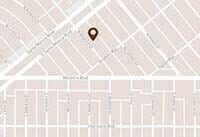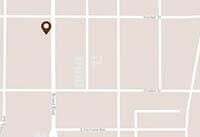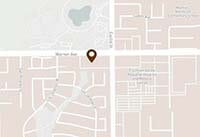
Lap band, also known as gastric banding, is one of the many available weight loss procedures out there. The procedure entails putting a silicone band around the stomach’s upper portion, creating a smaller stomach. This smaller stomach makes a person feel fuller even with a smaller food intake.
Compared with other bariatric surgery procedures, the lap band is the only one that incorporates in its design the adjustment of the band. So on the question of whether you need lap band readjustment if you have had the procedure, the answer is one big YES.
Read on to find out why.
Why Is There A Need For Adjustment In The Lap Band?
There are two main reasons why the lap band has to be adjusted. One reason is that adjustment has to be done to increase the restriction in your stomach if you still feel constantly hungry or craving food after the lap band has been put in place. It is also done if the optimal weight loss expected from the procedure has not been reached.
Another main reason for the adjustment of the lap band is the removal of fluid from the silicone band. This is done when you find that you have difficulty swallowing or are experiencing night coughs after the lap band procedure. Adjusting the lap band by removing fluids is also done if you experience regurgitation, acid reflux, or heartburn.
The correct adjustment of your lap band should give you a sense of feeling of being full even after eating only a small portion of food. It should also allow you to tolerate most food.
How Do I Know If I Need An Adjustment In My Lap Band?
Your surgeon will determine if you need adjustment in your lap band. If your surgeon determines that you are not achieving your optimal weight loss goal, an adjustment may be in order.
Another reason to adjust the band is if you find yourself not satisfied with the small amount of food and you still feel hungry. If your surgeon finds that an adjustment is needed, an injection of a saline solution is going to be injected through a port under the skin of your stomach that goes through a tube. The solution must reach your silicone band.
Speaking of the saline solution, one more reason for your surgeon to adjust the lap band is the need to reduce the amount of saline solution in the silicone band. Your band may be too tight, as indicated by increased feelings of regurgitation, heartburn, or acid reflux. Loosening the band slightly may fix the problem.
It is best to keep a log of your daily food intake, weight loss, and any other experiences that may be related to the lap band surgery. This will help your surgeon determine if an adjustment to your lap band is indeed necessary.
How Is The Band Adjusted?
As mentioned above, the adjustment is done through a tube that is attached to the silicone band placed in your stomach. The tube can be accessed through a port under the skin of the abdomen.
Saline solution is injected or removed through the port into the tube until it reaches or is brought out from the silicone band.
Adjusting the lap band does not require surgery. It is a quick and simple procedure that can be done in your surgeon’s office. It only takes 10 – 15 minutes for your surgeon, nurse or dietitian to adjust the silicone band by injecting or removing fluid through the access port.
The initial adjustment to the silicone band can be done 4 to 6 weeks after surgery. You can expect around three adjustments to the lap band in the first year after surgery for you to achieve optimal weight loss. There is also no limit to the number of times the band may be adjusted.
The necessity of adjusting the band depends on whether you are achieving optimal weight loss, and on any reactions that your body may have due to the restriction in your stomach caused by the band.
How Does A Lap Band Adjustment Feel?
If you are fretting about the adjustment in your lap band and how it may feel, you shouldn’t. It is a simple, quick, and relatively painless procedure. Expect to feel some discomfort but you should be feeling well enough to resume your normal day-to-day functions immediately after an adjustment.
When you schedule an adjustment, you may be required to keep a log of your food intake as well as all physical activities three days prior to the date. After an adjustment, you may have to return to a liquid diet for a day or two followed by a soft idea for two days at most. You may resume your recommended healthy diet after.
If ever you feel unwell or feel that something is not right after a lap band adjustment, inform your doctor immediately. It is better that this is addressed immediately, especially if it is related to lap band adjustment. It may be your body’s reaction to the band, the flow of food to your stomach, or even the band itself along with the tube and the access port.
Can There Be Any Complications In Lap Band Adjustment?
Like with any procedure, complications may arise. It is good to be aware of any of them.
One such complication may be due to the non-achievement of the optimal adjustment measure of the band itself, resulting in minimal weight loss.
Mechanical problems with the band may also be a source of complication. Sometime after your lap band surgery, finding the access port may be a challenge as it may have already been embedded in the stomach of your skin. Locating the access port may thus require an x-ray. And if your surgeon suspects a problem or complication such as a fluid leak, tube disconnection, or asymmetric band, fluoroscopy may be needed to facilitate access to the port for the required adjustment.
Posted on behalf of Dr. David G. Davtyan MD, FACS, FICS





